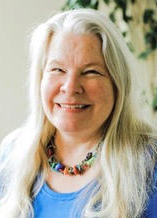In February 2010, the writers of Parks and Recreation introduced a new holiday to American pop culture: Galentine’s Day.
As this memorable episode opens, the sitcom’s exuberant main character, Leslie Knope, is distributing gift bags to women gathered around a restaurant table. Leslie excitedly explains that inside each bag they will discover bouquets of hand-crocheted flower pens, a mosaic portrait created from the crushed bottles of their favorite diet soda, and a personalized 5,000-word essay explaining why they are so awesome.

Tambi Brown Swiney
Leslie has assembled her dearest friends (including her mother) at this restaurant on Feb. 13 for her annual celebration of Galentine’s Day. She proclaims this holiday to be “the best day of the year” where gals “kick it breakfast-style.”
Galentine’s Day, she explains as she looks into the camera, is a time for “ladies celebrating ladies.”
This fictional February holiday has taken root in many friend groups, perhaps as a response to the idolization of romantic relationships on Feb. 14. Many folks feel left out on Valentine’s Day. Those happy elementary school memories of decorating shoeboxes in which your classmates would deposit store-bought mini-Valentines have long since faded. “Conversation hearts” and cupcakes won’t cut it anymore. According to Forbes, Valentine’s Day spending in 2021 exceeded $21 billion. That’s a lot of candy, flowers, jewelry and restaurant meals.
After being unable to safely spend time in close physical proximity to friends during the pandemic, the idea of intentionally celebrating friendships is deeply appealing. We all know healthy friendships take work. An ongoing investment of attention, time and energy is required if we desire to nurture new friendships and sustain old ones.
In her brief TED video “What Makes a Friendship Last?” data journalist Mona Chalabi explains we need to spend 40 to 60 hours with someone before they can move beyond the realm of acquaintance to become a casual friend. A full-fledged friend is someone with whom we’ve spent at least 80 hours. To reach the most exalted level of friendship — a best friend — requires the investment of more than 200 hours of quality time.
Last November as I sat in an unfamiliar sanctuary surrounded by strangers, I looked around and wondered, “Who will be my friend?” This question did not arise out of anxiety; instead, I felt a sense of genuine excitement about who God might bring into my life during this season of transition.
A few weeks earlier, my husband and I had relocated to Asheville, N.C., after spending the past 30 years living in Nashville, Tenn. — one house, three decades, countless memories. By moving, we were leaving behind the friends with whom we had raised our child, friends who had accompanied us in times of deep grief and boundless joy, friends who knew our stories.
As I inserted our Christmas cards into envelopes a few days after Thanksgiving — I needed to get our new address into our friends’ hands before they attempted to mail us their cards — I thought about how these recipients had become our friends in the first place. How did they end up on our annual Christmas card list?
“I realized the vast majority of our friendships were forged in congregational settings.”
I realized the vast majority of our friendships were forged in congregational settings. We met one couple when we joined a church in Maryland a few months after our wedding. Although our time there was relatively brief, we have remained friends across the miles and through the years. Another dear friend gave birth to her son three weeks after our son was born. Those boys were together in the church nursery as infants; they remain best friends three decades later.
Most of our enduring friendships were forged during those child-rearing years, as our lives intersected with those of other parents whose children participated in Sunday school, children’s choir, Bible drill, and vacation Bible school with our son. Friendships with folks outside our parenting circle blossomed through youth group chaperoning experiences like summer camps, choir tours and mission trips.
We also logged some of those required friendship-building hours of quality time on our annual fall group camping trips, which at one point grew to more than 60 participants — an activity that raised the ire of the pastor, who disliked having so many church members absent from worship on an October Sunday. Nevertheless, the camping trip remained a fixture of our fall calendar for 18 years.
Two months after our son left home for college, we left this community of faith where we had forged so many friendships and made so many memories. After years as an over-achieving layperson, I had been called to serve as associate pastor at another Baptist church in town. Foolishly, I thought my friendships would not suffer; after all, my new church was less than 6 miles from our old church home, and we were still living in the same house.
As I immersed myself in the weekly rhythms of my new congregation, I realized how deeply I had depended on thrice-weekly church attendance to foster friendships. I no longer would encounter my old friends in the hallways of the church on Sunday mornings, Sunday evenings, or Wednesday nights. I wouldn’t be able to get weekly updates in post-worship chats. I wouldn’t have leisurely, meandering conversations with other chaperones during downtime on youth trips. If I wanted to maintain these relationships, I would have to work at it.
During the decade when I served as associate pastor, I learned how to make new friends, but keep the old. My life was enriched as I forged new “silver” friendships with people of all ages in my congregation. (While I was in seminary, a pastor warned me, “You can’t have friends in your congregation.” He was wrong. He also was lonely.) Meanwhile, I developed new strategies for keeping in touch with “gold” friends, including a private Facebook group and periodic Girls’ Nights Out. These friends filled the sanctuary on the Sunday when I was ordained and continued to encourage me on my vocational journey.
Although I felt like the outlier at the time, eventually many of those folks also ended up leaving the Baptist church where our friendships had first taken root. While the majority remain in the Nashville area, they chose to engage with other local communities of faith for a variety of reasons. This formerly thoroughly Baptist group now includes Methodists, Episcopalians and an Anglican. Nevertheless, our friendships endure.
When my husband and I made the decision last year to leave our home state, I immediately began to investigate church options. We would need to connect with a community of faith quickly to keep our spiritual bearings during such a dramatic period of transition. We needed to find a place to belong, a place where we could worship and learn and serve and grow alongside others who are seeking to be conduits of God’s love in the world. We would need new friends to accompany us on our spiritual journey, even as we work to nurture those long-standing, life-giving friendships that have sustained us for decades.
Which brings me back to Galentine’s Day. Leslie Knope is right: Friendships are worth celebrating extravagantly. While I won’t be able to gather with old friends around a restaurant table and shower them with carefully crafted gifts today, I will be intentionally holding each of them close in my heart. I will thank God for their gifts and graces, for the countless ways they have brought out the best in me.
And even as I wonder, “Who will be my friend?” as I survey a crowd of unfamiliar faces from my new perch in the choir loft in my new church home, I will ask myself a second question: “How can I be a friend who brings out the best in others?”
I hope I won’t be required to create bouquets of hand-crocheted flower pens.
Tambi Brown Swiney is an ordained Baptist minister who is making new friends in the mountains of Western North Carolina while nurturing enduring friendships in Tennessee and elsewhere. Tambi has pastoral experience serving in both congregational and community contexts. She is currently a student in the Haden Institute’s two-year spiritual direction training program.
Related articles:


